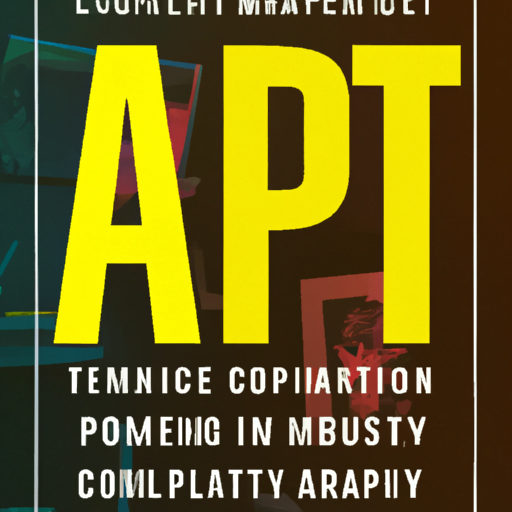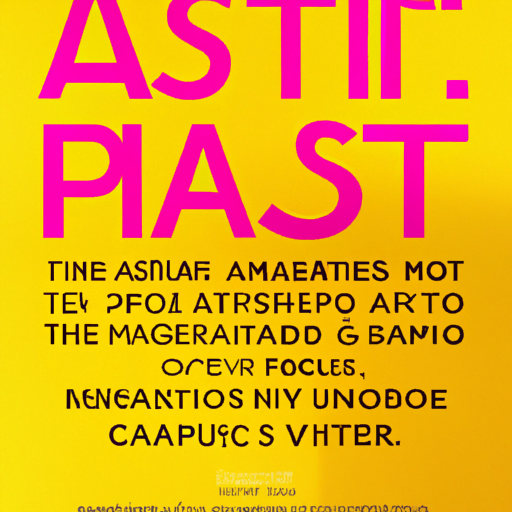
-
Table of Contents
- Typography in Poster Design: Creating Impactful Visuals
- The Power of Typography in Poster Design
- Best Practices for Typography in Poster Design
- 1. Choose Fonts Wisely
- 2. Establish Visual Hierarchy
- 3. Pay Attention to Spacing and Alignment
- Case Studies: Typography in Impactful Poster Designs
- 1. “The Art of Typography” Exhibition Poster
- 2. “Save the Bees” Awareness Campaign Poster
- Typography in Poster Design: Key Takeaways
Typography in Poster Design: Creating Impactful Visuals

Typography plays a crucial role in poster design, as it has the power to communicate messages, evoke emotions, and create impactful visuals. When used effectively, typography can capture the attention of viewers and convey the intended message with clarity and style. In this article, we will explore the importance of typography in poster design and provide valuable insights on how to create visually appealing and impactful posters.
The Power of Typography in Poster Design
Typography is more than just selecting a font and arranging letters on a poster. It is an art form that requires careful consideration of various elements such as font choice, size, spacing, hierarchy, and color. When these elements are thoughtfully combined, typography can transform a poster into a visually stunning and effective communication tool.
Here are some reasons why typography is crucial in poster design:
- Visual Hierarchy: Typography helps establish a visual hierarchy, guiding viewers’ eyes through the poster and highlighting important information. By varying font sizes, weights, and styles, designers can create a clear hierarchy that directs attention to key messages.
- Emotional Impact: Different fonts evoke different emotions. Serif fonts, for example, can convey a sense of tradition and elegance, while sans-serif fonts are often associated with modernity and simplicity. By choosing fonts that align with the intended message and emotions, designers can enhance the impact of their posters.
- Readability: The primary purpose of a poster is to convey information. Typography plays a crucial role in ensuring that the text is legible and easy to read. By selecting appropriate fonts, adjusting spacing, and considering contrast, designers can improve the readability of their posters.
- Brand Consistency: Typography is an essential element of a brand’s visual identity. Consistent use of typography across different marketing materials, including posters, helps reinforce brand recognition and establish a cohesive visual language.
Best Practices for Typography in Poster Design
Now that we understand the importance of typography in poster design, let’s explore some best practices to create impactful visuals:
1. Choose Fonts Wisely
The choice of fonts can significantly impact the overall look and feel of a poster. It is essential to select fonts that align with the message, target audience, and brand identity. Here are some tips:
- Consider the poster’s purpose and audience. For formal events or professional settings, serif fonts may be more appropriate. For contemporary or casual events, sans-serif fonts can work well.
- Avoid using too many fonts in a single poster. Stick to two or three fonts to maintain visual consistency and avoid overwhelming the viewer.
- Ensure that the selected fonts are legible, even from a distance. Test the readability by printing a small sample of the text and evaluating its clarity.
2. Establish Visual Hierarchy
Creating a clear visual hierarchy is crucial to guide viewers’ attention and convey the intended message effectively. Here are some techniques to establish visual hierarchy:
- Use font size variations to emphasize important information. Larger fonts draw attention, while smaller fonts indicate secondary details.
- Experiment with font weights and styles. Bold or italicized fonts can help differentiate headings from body text.
- Utilize color contrast to highlight key elements. For example, use a bold color for headings against a neutral background.
3. Pay Attention to Spacing and Alignment
Spacing and alignment play a crucial role in enhancing readability and creating a visually pleasing composition. Here are some tips:
- Ensure adequate spacing between letters, words, and lines of text. Too little spacing can make the text appear cluttered, while too much spacing can create gaps that disrupt the flow.
- Align text elements consistently. Choose between left, right, center, or justified alignment based on the overall design and readability.
- Consider the negative space around the text. A well-balanced composition with appropriate negative space can make the typography stand out.
Case Studies: Typography in Impactful Poster Designs
Let’s take a look at some real-world examples of posters that effectively utilize typography to create impactful visuals:
1. “The Art of Typography” Exhibition Poster
This poster uses a combination of bold and elegant serif fonts to convey a sense of tradition and sophistication. The large heading draws attention, while the smaller body text provides additional details. The careful spacing and alignment create a balanced composition that is easy to read and visually appealing.
2. “Save the Bees” Awareness Campaign Poster
This poster uses a playful and organic sans-serif font to convey a sense of urgency and environmental awareness. The use of color contrast, with a bold yellow heading against a green background, helps highlight the main message. The varying font sizes and weights establish a clear visual hierarchy, guiding viewers through the poster.
Typography in Poster Design: Key Takeaways
Typography is a powerful tool in poster design, capable of creating impactful visuals and effectively conveying messages. Here are the key takeaways:
- Typography establishes visual hierarchy and guides viewers’ attention.
- Fonts evoke emotions and should align with the intended message.
- Readability is crucial, and legible fonts should be selected.
- Consistent typography helps reinforce brand identity.
- Choose fonts wisely, considering the purpose and audience of the poster.
- Establish visual hierarchy through font size, weight, and color contrast.
- Pay attention to spacing, alignment, and negative space.
By following these best practices and studying successful examples, designers can create visually stunning and impactful posters that effectively communicate their intended messages.
